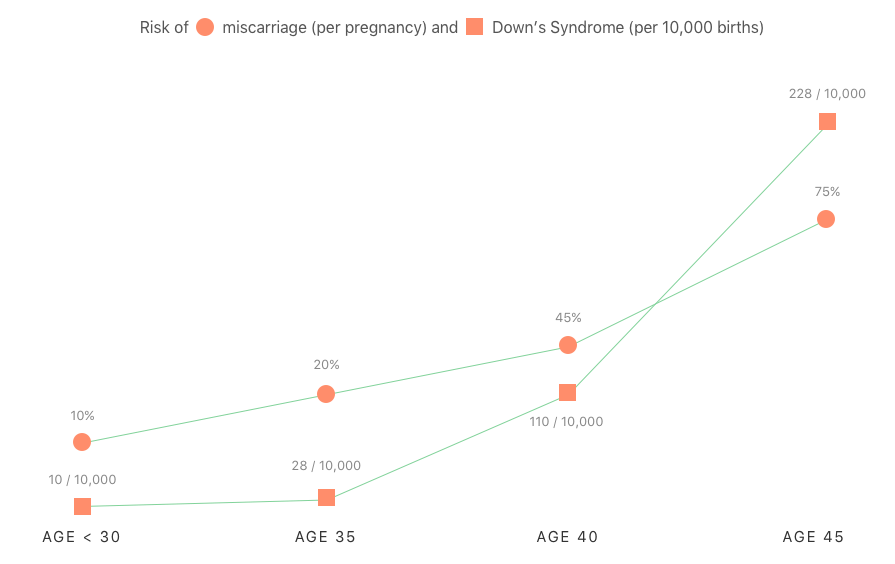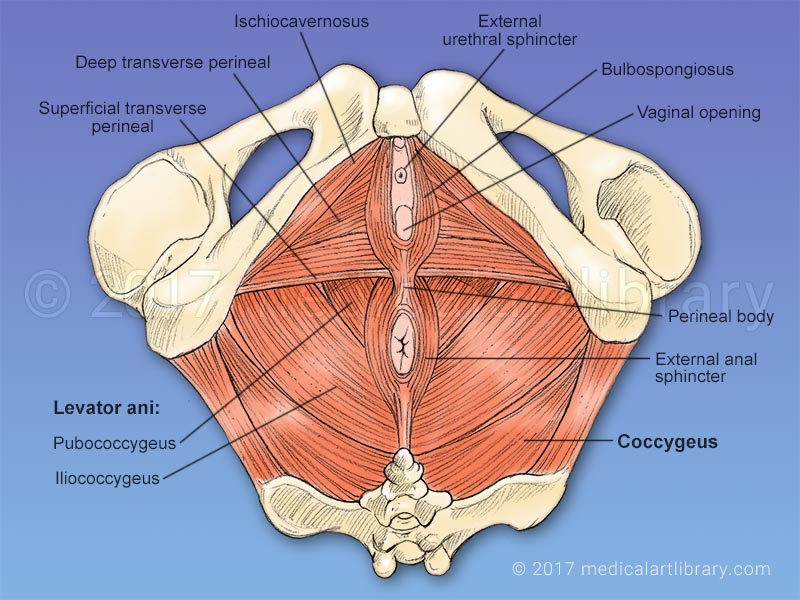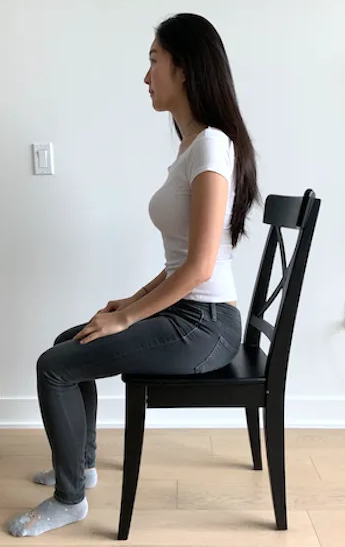 Ever since I can I remember, I’ve wanted children. My 20s flew by as I focused on my career and figuring out who I am. To increase the chances of having healthy children when I’m ready, I decided to freeze my eggs. Egg freezing is the process of stimulating the ovaries to ripen multiple eggs, extracting the eggs, and freezing them for safe storage. Since then, many women and their significant others have been asking about my experience.
About a year ago when I was 29, I froze my eggs. After two weeks of injections and my first time under general anesthesia, I retrieved nine eggs. During this process, I severely injured my pelvic floor muscles. It took about a year to fully recover.
I wanted to share why I froze my eggs, what negative side effects I’ve encountered, what pelvic floor muscles are, and why I still recommend egg freezing. I’ve never heard or read about anyone else having this side effect. However, I hope this post can help anyone who might be having similar issues.
Ever since I can I remember, I’ve wanted children. My 20s flew by as I focused on my career and figuring out who I am. To increase the chances of having healthy children when I’m ready, I decided to freeze my eggs. Egg freezing is the process of stimulating the ovaries to ripen multiple eggs, extracting the eggs, and freezing them for safe storage. Since then, many women and their significant others have been asking about my experience.
About a year ago when I was 29, I froze my eggs. After two weeks of injections and my first time under general anesthesia, I retrieved nine eggs. During this process, I severely injured my pelvic floor muscles. It took about a year to fully recover.
I wanted to share why I froze my eggs, what negative side effects I’ve encountered, what pelvic floor muscles are, and why I still recommend egg freezing. I’ve never heard or read about anyone else having this side effect. However, I hope this post can help anyone who might be having similar issues.
Why freeze my eggs?
First and foremost, younger eggs have a higher chance of yielding healthier children. The rate of miscarriage and Down syndrome increases exponentially starting at age 30 [1]. My first round of egg freezing was at age 29, and I plan to do another round at age 33 if I haven’t had a baby by then
[1] Risk of miscarriage and Down syndrome as it correlates to age of female from Spring Fertility’s Info Session
Second, conceiving with frozen eggs has plethora of other benefits. You can generally select the baby’s gender, do genetic screening, and delay the pregnancy (I’m not ready right now!). I recommend at least attending an info session if you’re considering having children.Negative Side Effects
Hormones
Every day for two weeks, I injected one to three shots of hormones and other medications into my abdomen. My E2 (Estradiol) level before these injections was 53.8 pg/mL. At the peak, it rose to 9,759 pg/mL!
My medicine kit
My body did not react well to these hormones. During these two weeks, I experienced vomiting, nausea, bloating, difficulty walking, irritability, and lethargy. This wasn’t a surprise — I had had similar symptoms (nausea and vomiting) from birth control pills with a much lower dosage of estrogen. I had worked with my OBGYN to find the right pill (I use Lo Lestrin Fe, which contains less estrogen than most pills) and the right time to take the pill (one to two hours before going to bed) to alleviate these symptoms. If you plan to freeze your eggs and have had negative side effects from birth control pills, I recommend talking to your OBGYN. Taking the injections at the same time that I used to take the birth control pills was helpful for me.Right Foot Pain
I cried the whole day after the surgery was done. The doctor told me I had a chance of retrieving 9–16 eggs. I ended up with nine. I felt like a total failure. This news on top of all the estrogen made me hysterical. But the worst side effect came after. A week after the surgery, out of nowhere, my right foot started hurting. Despite my best effort to RICE (Rest, Ice, Compress, Elevate) it, the pain only got worse. Eventually, my whole leg gave up and I couldn’t walk. I went to the podiatrist the next day, who couldn’t find anything wrong with my foot. He suggested I see a physical therapist (PT). The PT said the same thing: there’s nothing wrong with your foot. After asking me about recent events, he stopped me when I said I had my eggs frozen. He said there was a high chance I had injured my pelvic floor muscles during the egg freezing process. I had no idea what that meant.Pelvic Floor Muscles
Since that PT session, I’ve learned a lot about pelvic floor muscles. The pelvic floor muscles surround your pelvis [2]. When you injure or weaken these muscles, you often don’t feel the pain in that area — you feel a referred pain. Referred pain can be near the groin area, lower back, thighs, legs, and/or even your feet. In 2008, NIH cited that 25% of females in the US have pelvic disorders. The rate increases with age and the number of live births given.
[2] Pelvic floor muscles in red from Medical Art Library
Two types of examination can be used to confirm weakening or injury of the pelvic floor: 1. External examination near the tailbone. 2. Internal examination via vaginal or rectal openings. The external examination revealed a 9 out of 10 pain when the PT pressed near my tailbone. It was clear that my right foot pain was a referred pain from the pelvic floor muscles. After a few sessions of external work, the PT referred me to his colleague, an expert in pelvic floor work. After six sessions of internal and external work over two months, I felt better and was ready to go back to working out and living my normal life. This is where I started making lots of mistakes, which led me to get into a cycle [3]
[3] The pain and healing cycle I went through from July to December 2018. I went through about 4 cycles.
Mistakes
1. Overexerting in the gym. About three weeks into working out, I felt like I was doing so well that I tried to lift more weight more than I should have. Two sets into my squat, my right leg started hurting so much that I had to stop. Setback, go see PT 2. Travel. Each vacation set me back. I attribute this to sitting on the airplane for a long time (probably with the wrong posture) and not working out or sleeping on a regular cadence. Setback, go see PT 3. Stress. By the third time I had been through this cycle, I realized a strong correlation between stress and this injuring point. I even noticed the exact moment I would be “clenching” my pelvic floor muscles. If I was stressed at work or doing something strenuous, I would clench. Setback, go see PTChanges
By December, I had had enough. The pain never got to a point where I couldn’t do my daily tasks or relieve the pain by seeing the PT. But I never felt 100%. Enough was enough. With the help of my PT, I came up with a plan to fix this once and for all. Yoga I now do yoga every day. I will continue doing this every day until I’m 100% better and will dial it back at that point. The changes I’ve had with yoga to the pelvic floor are undeniable — I’ve had less clenching and less drop-off in health between PT sessions Posture
I’m working on improving my sitting and walking posture. Especially on airplanes, I focus on sitting correctly.
How I visualize this posture:
1. Sit comfortably
2. Sit up straight while squeezing my abs
3. Tilt my upper body 5 degrees forward (toward my thigh)
4. Then let go of my abs and put my upper-body weight on my pelvic floor/hips without dropping the shoulders
Self PT
I’ve learned a few moves I can do at home to prevent and/or nip the injury in the bud.
Posture
I’m working on improving my sitting and walking posture. Especially on airplanes, I focus on sitting correctly.
How I visualize this posture:
1. Sit comfortably
2. Sit up straight while squeezing my abs
3. Tilt my upper body 5 degrees forward (toward my thigh)
4. Then let go of my abs and put my upper-body weight on my pelvic floor/hips without dropping the shoulders
Self PT
I’ve learned a few moves I can do at home to prevent and/or nip the injury in the bud.